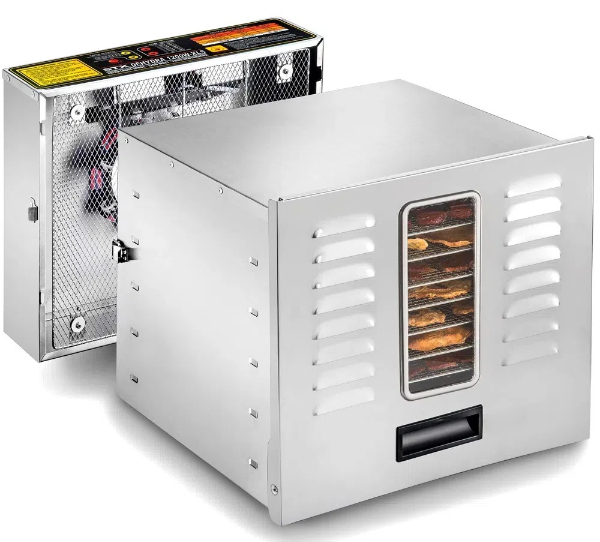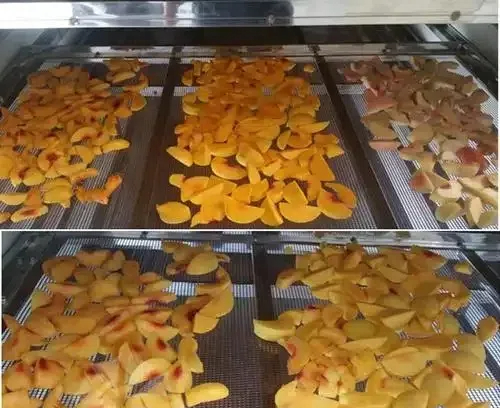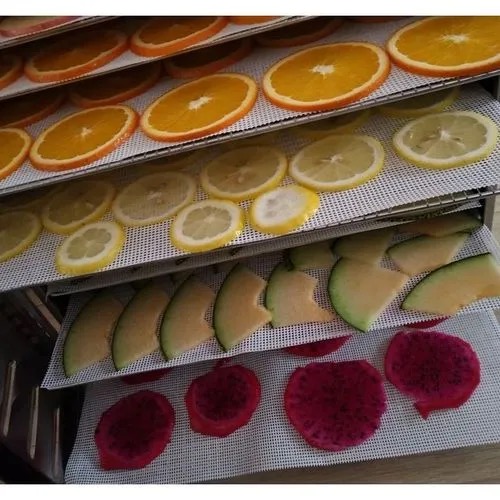Hang type dryers have emerged as a revolutionary solution in the food processing industry, particularly for drying various food products efficiently and effectively. This article explores how these dryers enhance workflow efficiency in factories, focusing on their operational advantages, energy efficiency, and versatility.

Introduction to Hang Type Dryers
Hang type dryers are specialized machines designed to suspend food products during the drying process. Unlike traditional drying methods that rely on trays or flat surfaces, these dryers use hangers to maximize airflow around the products. This method is particularly effective for items such as noodles, sausages, fish, and herbs, where even drying is crucial to prevent spoilage and maintain texture.
The Mechanics of Hang Type Dryers
Hang type dryers operate using a combination of heat and airflow. The food items are hung from racks or hooks within a closed chamber. Hot air is circulated throughout the chamber, ensuring that all surfaces of the food are exposed to the warm air. This design not only speeds up the drying process but also helps maintain uniformity in moisture removal, which is essential for high-quality dried products.
Benefits of Hang Type Dryers
1. Controlled Environment
Hang type dryers provide a controlled environment where temperature, humidity, and airflow can be precisely managed. This level of control is essential for preserving food quality and extending shelf life. The ability to maintain consistent conditions throughout the drying process minimizes the risk of spoilage and ensures that the final product retains its desired characteristics.
2. Energy Efficiency
One of the standout features of hang type dryers is their energy efficiency. Utilizing heat pump technology, these machines can save up to 75% on energy costs compared to traditional drying methods. This not only lowers operational expenses but also reduces the environmental impact of food processing operations.
3. Versatility in Food Processing
Hang type dryers are adaptable for a wide range of food products:
- Noodles: The suspended arrangement prevents clumping and ensures uniform drying.
- Meats: They provide a controlled environment for curing and drying meats, enhancing flavor while preventing bacterial growth.
- Fish and Seafood: Gentle drying conditions help retain natural flavors and aromas.
- Herbs and Spices: Low-temperature drying preserves essential oils and flavors.
- Fruits and Vegetables: They produce high-quality dried fruits and vegetables with minimal nutrient loss.
Workflow Efficiency Improvements
The implementation of hang type dryers in food processing facilities leads to significant improvements in workflow efficiency:
1. Faster Drying Times
The design of hang type dryers allows for faster moisture removal compared to traditional methods. This results in shorter production cycles and increased throughput, enabling factories to meet higher demand without compromising quality.
2. Reduced Labor Costs
Automated operation reduces the need for manual intervention during the drying process. With intelligent digital controls, operators can program specific drying cycles tailored to different products, ensuring consistent results with minimal oversight. This automation leads to fewer errors and a more streamlined production process.
3. Enhanced Product Quality
By providing an even drying process with precise control over environmental conditions, hang type dryers significantly enhance product quality. This results in better texture, flavor retention, and nutritional value, which are critical factors for consumer satisfaction.

Case Studies
Several companies have reported substantial benefits after transitioning to hang type dryers:
1. ABC Noodles: After replacing traditional tray dryers with hang type machines, they observed a 20% reduction in waste and a 15% increase in production efficiency due to improved product quality.
2. XYZ Meats: By implementing hang type dryers for their curing process, they reduced curing time by 30% while maintaining flavor integrity and reducing energy consumption.
Technical Features of Hang Type Dryers
To understand how hang type dryers improve workflow efficiency further, it’s essential to look at their technical features:
1. Advanced Control Systems
Modern hang type dryers are equipped with advanced control systems that allow operators to monitor real-time data on temperature and humidity levels within the drying chamber. These systems can automatically adjust settings based on the specific requirements of different food products, ensuring optimal drying conditions at all times.
2. Modular Design
Many hang type dryers feature a modular design that allows manufacturers to customize their setup based on production needs. Factories can scale up or down easily by adding or removing drying racks without needing extensive modifications to the existing system.
3. Safety Features
Safety is paramount in food processing environments. Hang type dryers often come with built-in safety features such as over-temperature protection and automatic shut-off systems that prevent overheating or equipment failure during operation.
Environmental Impact
The shift towards hang type dryers also has positive implications for sustainability in food processing:
1. Reduced Carbon Footprint
By consuming less energy than traditional drying methods, hang type dryers contribute to lower greenhouse gas emissions associated with food production processes.
2. Waste Reduction
Efficient moisture removal means less spoilage during storage and transportation phases, leading to reduced food waste overall.
3. Sustainable Materials
Many manufacturers are now focusing on using sustainable materials in their dryer construction, further enhancing their eco-friendly profile.
Integration with Other Food Processing Technologies
Hang type dryers can also be integrated seamlessly with other technologies used in food processing:
1. Pre-Treatment Processes
Before foods are dried using hang type dryers, they may undergo pre-treatment processes such as blanching or marinating. These steps can enhance flavor or preserve color before the actual drying takes place.
2. Packaging Solutions
Once dried, products often require specialized packaging solutions that maintain freshness during distribution. Many manufacturers now offer integrated packaging solutions that work harmoniously with hang type dryer outputs.
3. Quality Assurance Systems
Incorporating quality assurance systems into the workflow ensures that dried products meet safety standards and quality benchmarks before they reach consumers.
Conclusion
Hang type dryers represent a significant advancement in food processing technology. Their ability to provide efficient, uniform drying while preserving food quality makes them an invaluable tool for manufacturers worldwide. With energy-efficient designs and customizable features, these machines are poised to play a crucial role in the future of food processing.
The continuous evolution of hang type dryer technology promises even greater efficiencies and capabilities in the years ahead as manufacturers strive for higher productivity while minimizing their environmental impact.

FAQ
1. What types of products can be dried using hang type dryers?
Hang type dryers are suitable for various foods including noodles, sausages, fish, herbs, fruits like apples and pears, as well as vegetables such as tomatoes and peppers.
2. How do hang type dryers compare to traditional drying methods?
Hang type dryers offer more precise control over temperature and humidity compared to traditional methods like sun drying or tray drying, resulting in higher quality products with less risk of spoilage.
3. What is the energy savings potential of using hang type dryers?
Hang type dryers can save up to 75% on electricity compared to traditional drying methods due to their efficient heat pump technology.
4. Are there customization options available for hang type dryers?
Yes, manufacturers offer various customization options including modifications to hanger design, chamber size adjustments, and tailored control systems for optimal performance with different food types.
5. How do automated controls improve the efficiency of hang type dryers?
Automated controls enable real-time monitoring of temperature and humidity levels, allowing adjustments during the drying process that enhance efficiency and ensure consistent product quality.
Citations:
[1] https://www.dryeratech.com/hang-type-dryers-the-secret-to-perfectly-dried-products.html
[2] https://www.dryeratech.com/maximize-efficiency-with-hang-type-drying-machines.html
[3] https://patents.google.com/patent/CN110207480A/zh
[4] https://www.dryeratech.com/energy-efficiency-in-hang-type-drying-what-you-need-to-know.html
[5] https://www.researchgate.net/publication/318549930_Enhancing_the_Energy_Efficiency_of_Domestic_Dryer_by_Drying_Process_Optimization
[6] https://patents.google.com/patent/CN1405396A/zh
[7] https://gcwgandhinagar.com/econtent/document/1588156026Unit%20V%20Types%20of%20dryers%20and%20their%20applications.pdf
[8] https://www.kingstarwasher.com/news/industry-news/what-factors-influence-the-drying-efficiency-and-energy-consumption-of-industrial-dryers.html











